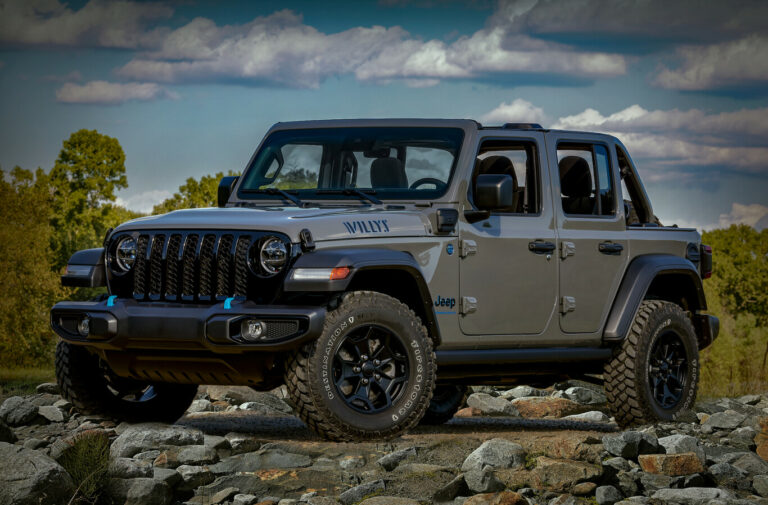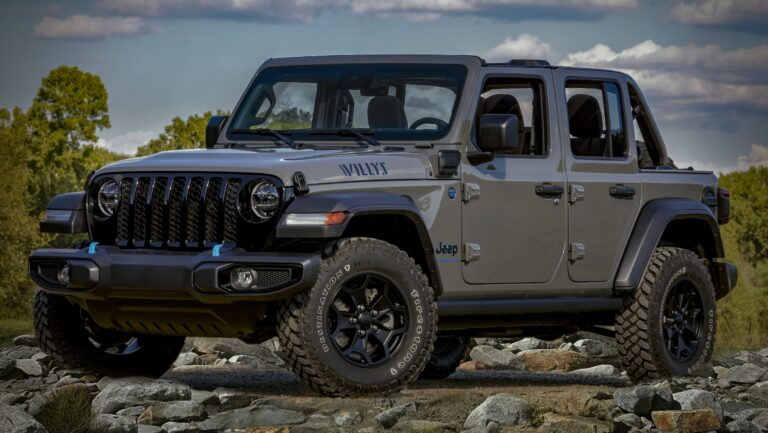Jeep Grand Cherokee SRT: A Comprehensive Wiki Guide
Jeep Grand Cherokee SRT: A Comprehensive Wiki Guide jeeps.truckstrend.com
Introduction: Unveiling the Grand Cherokee SRT Legend
When one mentions "Jeep Cherokee SRT," a common misconception arises. While the standard Jeep Cherokee is a capable compact SUV, the high-performance variant that bears the "SRT" (Street & Racing Technology) badge is, in fact, the Jeep Grand Cherokee SRT. This article serves as a comprehensive "wiki-style" guide to this legendary vehicle, delving into its history, specifications, ownership experience, and everything an enthusiast or potential buyer needs to know.
Jeep Grand Cherokee SRT: A Comprehensive Wiki Guide
The Jeep Grand Cherokee SRT carved out a unique niche in the automotive world: a family-friendly SUV with the heart of a muscle car. It masterfully blended utility, luxury, and supercar-rivalling straight-line performance, challenging perceptions of what an SUV could be. For those seeking exhilarating power without sacrificing practicality, the Grand Cherokee SRT stands as a testament to American engineering and audacious design. This guide aims to be the definitive resource, providing detailed insights into every facet of this remarkable machine.
The Genesis and Evolution: A Brief History of the Grand Cherokee SRT
The Grand Cherokee SRT’s journey began at a time when the concept of a high-performance SUV was still relatively nascent. Dodge’s SRT division was instrumental in transforming the practical Grand Cherokee into a pavement-shredding beast.
First Generation (WK): 2006-2010
The original Grand Cherokee SRT, based on the WK platform, debuted in 2006 and immediately turned heads. It was a bold statement from Jeep, signifying their entry into the burgeoning performance SUV segment.
- Engine: Powered by a naturally aspirated 6.1-liter HEMI V8 engine, producing a robust 420 horsepower and 420 lb-ft of torque.
- Performance: This enabled the SRT to sprint from 0-60 mph in a blistering 4.9 seconds, an astonishing figure for an SUV of its size at the time.
- Key Features: It featured a full-time all-wheel-drive system, massive Brembo brakes (six-piston front, four-piston rear), a lowered and stiffened suspension, and unique aerodynamic bodywork. The interior received sporty accents and upgraded materials, though it retained much of the Grand Cherokee’s utilitarian charm.
- Market Impact: The WK SRT was a trailblazer, proving that a Jeep could be just as comfortable on a drag strip as it was on a dirt road (though not this Jeep).

Second Generation (WK2): 2012-2021
After a brief hiatus, the Grand Cherokee SRT returned in 2012, based on the redesigned WK2 platform, ushering in a new era of power and refinement. This generation saw significant advancements in technology, comfort, and, most importantly, performance.

- Engine: The 6.1L HEMI was replaced by an even more potent naturally aspirated 6.4-liter (392 cubic inch) HEMI V8. Initially producing 470 horsepower and 465 lb-ft of torque, power later increased to 475 horsepower and 470 lb-ft of torque for the 2015 model year onwards.
- Performance: 0-60 mph times dropped to an astonishing 4.5 seconds, with a quarter-mile in the high 12-second range. Top speed was electronically limited to 160 mph.
- Transmission: The WK2 initially utilized a 5-speed automatic, but was quickly upgraded to a more efficient and performance-oriented 8-speed automatic transmission (TorqueFlite 8HP70) from 2014 onwards, further improving acceleration and fuel economy (relatively speaking).
- Technological Advancements: The WK2 introduced the advanced Select-Track system, offering multiple driving modes (Auto, Sport, Track, Tow, Snow) that adjusted suspension, transmission, stability control, and drivetrain settings. It also featured a more sophisticated Uconnect infotainment system, adaptive cruise control, and enhanced safety features.
- Design Evolution: The exterior became more aggressive yet refined, with a larger front fascia, heat extractors on the hood, and a more pronounced rear spoiler. The interior was significantly upgraded, offering premium leather, carbon fiber accents, and a driver-focused cockpit with performance pages displayed on the Uconnect screen.
- Successor: While the Grand Cherokee SRT continued to be a formidable force, the introduction of the supercharged Grand Cherokee Trackhawk in 2018 pushed the boundaries even further, effectively becoming the ultimate performance variant in the lineup, though the SRT remained a high-demand model for its naturally aspirated glory.

Core Specifications and Engineering Prowess
The Grand Cherokee SRT is a marvel of engineering, combining heavy-duty components with sophisticated electronics to deliver its astonishing performance.
- Powertrain:
- Engine (WK2): 6.4L (392 cu in) naturally aspirated HEMI V8. Features fuel-saving cylinder deactivation technology (Fuel Saver Technology), though it rarely engages under spirited driving.
- Transmission: ZF 8-speed TorqueFlite automatic, known for its rapid shifts and durability.
- Drivetrain: Full-time Quadra-Trac Active On-Demand 4×4 system with a rear electronic limited-slip differential (ELSD) for optimal traction distribution.
- Chassis and Suspension:
- Reinforced chassis for increased rigidity.
- Adaptive Bilstein suspension with active damping, allowing for dynamic adjustments based on driving mode and road conditions. This provides a surprisingly comfortable ride in "Auto" mode and stiffens considerably in "Track" mode.
- Heavy-duty anti-roll bars for improved cornering stability.
- Braking System:
- High-performance Brembo brakes are standard: six-piston calipers up front and four-piston calipers in the rear, paired with large vented rotors. This ensures exceptional stopping power commensurate with its acceleration.
- Performance Metrics (WK2):
- 0-60 mph: 4.5 seconds
- Quarter-mile: 12.8-13.0 seconds
- Top Speed: 160 mph (electronically limited)
- Braking (60-0 mph): Approximately 116 feet
- Exterior and Interior Design:
- Exterior: Aggressive stance, unique front fascia with cold-air intake and fog lamp bezels, sculpted hood with functional heat extractors, body-colored wheel flares, side sills, and rear valance, dual bright exhaust tips, and distinctive 20-inch forged aluminum wheels.
- Interior: Driver-focused cabin with performance-oriented features. Premium materials such as Nappa leather and suede, carbon fiber trim, heated and ventilated front seats, heated rear seats, a heated steering wheel, and a customizable instrument cluster with performance gauges. The Uconnect system with "SRT Performance Pages" provides real-time data on G-forces, horsepower, torque, and acceleration timers.
The Driving Experience: Power Meets Practicality
The Grand Cherokee SRT offers a unique driving experience, balancing raw power with surprising civility.
- On-Road Dynamics: The acceleration is brutal and addictive, accompanied by the glorious roar of the HEMI V8. Despite its SUV stature, the SRT handles remarkably well for its size, exhibiting minimal body roll thanks to its stiffened chassis and adaptive suspension. The steering is precise, providing good feedback.
- Daily Commuting: In "Auto" mode, the SRT transforms into a comfortable and relatively compliant daily driver. The adaptive suspension soaks up road imperfections reasonably well, and the cabin is well-insulated from road and wind noise. Its SUV dimensions mean ample passenger and cargo space, making it genuinely practical for families or hauling gear.
- Track Capability: While not a dedicated track car, the Grand Cherokee SRT can hold its own on a circuit. The "Track" mode sharpens throttle response, firms up the suspension, and optimizes transmission shifts for maximum performance. However, its considerable weight (over 5,100 lbs) means brake fade can become an issue during extended track sessions, and tire wear will be significant.
- Select-Track System: This system is key to the SRT’s versatility.
- Auto: Balances comfort and performance.
- Sport: Firmer suspension, quicker shifts, more aggressive throttle.
- Track: Maximum performance, stiffest suspension, fastest shifts, minimal stability control intervention.
- Tow: Adjusts engine and transmission for towing (rated up to 7,200 lbs).
- Snow: Optimizes traction for slippery conditions.
Ownership: Maintenance, Costs, and Modifications
Owning a Grand Cherokee SRT is an exhilarating experience, but it comes with specific considerations regarding maintenance and running costs.
- Routine Maintenance: Standard oil changes, fluid checks, and tire rotations are essential. Given the high-performance nature, using recommended synthetic oils and genuine parts is crucial.
- Common Wear Items:
- Tires: The high horsepower and AWD system, combined with the vehicle’s weight, lead to significant tire wear, especially if driven aggressively. Expect to replace tires more frequently than with a standard SUV. High-performance tires are also expensive.
- Brakes: The Brembo brake system is powerful but also subject to wear. Pads and rotors will need replacement more often than on a typical vehicle, and quality OEM or aftermarket performance components are not cheap.
- Fuel Consumption: This is perhaps the biggest "cost of ownership." The 6.4L HEMI is notoriously thirsty, with real-world mileage often in the low teens (MPG). It also requires premium unleaded fuel.
- Potential Issues: While generally robust, like any complex performance vehicle, some owners report issues with:
- Infotainment System: Earlier Uconnect versions could be buggy.
- Electrical Gremlins: Minor issues like sensor failures.
- Drivetrain Components: Under extreme stress (e.g., repeated hard launches), components like half-shafts can be vulnerable, though this is less common in stock form.
- Aftermarket Scene: The Grand Cherokee SRT boasts a thriving aftermarket community.
- Exhaust Systems: Popular for enhancing the HEMI’s already intoxicating sound.
- Intakes & Headers: To improve airflow and minor power gains.
- Tuning: ECU tunes can unlock more power and optimize performance.
- Supercharging: For those who crave even more power, aftermarket supercharger kits can push horsepower figures well into the 700-800+ range, transforming the SRT into a true supercar killer.
Buying Guide: Important Considerations
For those considering purchasing a Grand Cherokee SRT, especially a used one, several factors demand attention.
- New vs. Used Market: The Grand Cherokee SRT (WK2) is no longer produced, so the used market is your primary option. This means greater depreciation has already occurred, offering significant value.
- Pre-Purchase Inspection (PPI): A thorough PPI by a trusted mechanic specializing in performance vehicles or Jeeps/Chrysler products is absolutely critical.
- Engine & Transmission: Check for leaks, unusual noises, smooth shifting.
- Suspension: Look for worn bushings, struts, or signs of accident damage.
- Brakes: Assess rotor thickness, pad wear, and fluid condition.
- Tires: Check for uneven wear, which could indicate alignment issues or hard driving.
- Accident History: A CarFax or AutoCheck report is essential to identify any prior damage.
- Modifications: Be wary of heavily modified examples unless you understand the modifications and their impact on reliability.
- Insurance and Registration: Due to its high performance and cost, insurance premiums for the Grand Cherokee SRT can be significantly higher than for a standard SUV. Factor this into your budget.
- Fuel Economy: As mentioned, be prepared for frequent stops at the gas station and high fuel bills.
- "Is it for me?":
- Pros: Unmatched performance-to-price ratio, practicality, distinctive looks, exhilarating sound.
- Cons: High running costs, limited off-road capability, can attract unwanted attention.
The Unrivaled Benefits of Grand Cherokee SRT Ownership
Despite its specific demands, owning a Grand Cherokee SRT offers numerous compelling advantages:
- Performance-to-Price Ratio: Few vehicles offer such explosive acceleration and dynamic capabilities for the price point, especially on the used market. It can outrun many sports cars while carrying five people and their luggage.
- Versatility and Utility: Unlike a dedicated sports car, the SRT retains the core practicality of an SUV. It has ample cargo space, comfortable seating for five, and the ability to tow.
- Distinctive Presence and Sound: The SRT commands attention without being overly ostentatious. Its aggressive styling cues hint at its performance, and the deep, resonant growl of the HEMI V8 is unmistakable and truly addictive.
- Driving Enjoyment: Whether it’s the thrill of a hard launch, the confident handling on a twisty road, or simply the feeling of immense power underfoot, the Grand Cherokee SRT delivers an incredibly engaging and satisfying driving experience.
Challenges and Practical Solutions
Every high-performance vehicle comes with its unique set of challenges. The Grand Cherokee SRT is no exception.
- Challenge: High Running Costs (Fuel, Tires, Brakes)
- Solution: Budget accordingly. Factor in premium fuel, more frequent tire replacements (consider all-season performance tires for daily driving to extend life), and regular brake inspections. Driving smoothly and avoiding excessive hard acceleration and braking will also prolong component life.
- Challenge: Limited Off-Road Capability
- Solution: Acknowledge that the SRT is designed for the pavement. Its lowered suspension, large wheels, and street-biased tires are not suitable for serious off-roading. If you need off-road prowess, a standard Grand Cherokee or Wrangler is a better choice.
- Challenge: Can Be Mistaken for Lesser Trims
- Solution: While its aggressive styling cues are present, to the untrained eye, it might just look like "another Grand Cherokee." Embrace the sleeper aspect, or consider subtle aftermarket touches (e.g., custom wheels, exhaust tips) if you desire more visual distinction.
- Challenge: Weight
- Solution: Its significant weight impacts handling dynamics and increases wear on consumables. The powerful engine and sophisticated suspension largely mitigate this, but it’s not a lightweight sports car. Drive within its capabilities and understand its limits.
Jeep Grand Cherokee SRT Price Guide (Estimated Used Market Values & Running Costs)
This table provides estimated price ranges for used Grand Cherokee SRT models, along with average annual running costs. Prices can vary significantly based on mileage, condition, optional extras, location, and market demand.
| Model Year Range | Generation | Estimated Used Price Range (USD) | Est. Annual Fuel Cost (USD) | Est. Annual Insurance (USD) | Est. Annual Maintenance (USD) (Excl. major repairs) |
|---|---|---|---|---|---|
| 2006-2010 | WK | $15,000 – $25,000 | $3,000 – $4,500 | $1,500 – $2,500 | $1,000 – $2,000 |
| 2012-2013 | WK2 (Early) | $20,000 – $30,000 | $3,500 – $5,000 | $1,800 – $2,800 | $1,200 – $2,200 |
| 2014-2017 | WK2 (Mid) | $25,000 – $40,000 | $3,500 – $5,000 | $2,000 – $3,000 | $1,200 – $2,500 |
| 2018-2021 | WK2 (Late) | $35,000 – $55,000+ | $3,500 – $5,000 | $2,200 – $3,500+ | $1,500 – $2,800 |
- Disclaimer:
- Fuel Cost: Based on 12,000 miles/year, 13 MPG average, and $4.00/gallon premium fuel. Actual costs will vary based on driving habits and fuel prices.
- Insurance: Highly dependent on driver age, location, driving record, and chosen coverage.
- Maintenance: Includes routine services, potential tire rotations, and minor wear item replacements. Major repairs (e.g., transmission issues, engine problems) would add significantly.
- Used Prices: These are rough estimates and can fluctuate wildly based on market conditions, vehicle condition, mileage, and optional packages. Low-end prices might reflect higher mileage or cosmetic imperfections, while high-end prices are for well-maintained, lower-mileage examples.
Frequently Asked Questions (FAQ)
Q: Is the Grand Cherokee SRT reliable?
A: Generally, yes. The HEMI V8 engines are known for their durability. Like any high-performance vehicle, proper maintenance and respectful driving are key. Specific components (like tires and brakes) are wear items due to the performance.
Q: Can the Grand Cherokee SRT go off-road like other Jeeps?
A: No. The Grand Cherokee SRT is specifically designed for on-road performance. Its lowered suspension, street-biased tires, and aerodynamic body kit are not suitable for off-roading. Attempting to do so will likely result in damage.
Q: What’s the difference between the Grand Cherokee SRT and the Grand Cherokee Trackhawk?
A: The primary difference is the engine. The SRT uses a naturally aspirated 6.4L HEMI V8 (475 hp), while the Trackhawk is equipped with a supercharged 6.2L HEMI V8 (707 hp), essentially the Hellcat engine. The Trackhawk is significantly more powerful and expensive.
Q: What type of fuel does the Grand Cherokee SRT require?
A: The Grand Cherokee SRT requires premium unleaded gasoline (91 octane or higher).
Q: Is it a good family car?
A: Yes, surprisingly so. It retains the Grand Cherokee’s spacious interior, comfortable seating, and ample cargo room, making it practical for daily family duties, school runs, and road trips, all while offering exhilarating performance.
Q: How much does it cost to maintain a Grand Cherokee SRT?
A: Maintenance costs are higher than a standard SUV due to its performance nature. Expect higher costs for premium fuel, more frequent tire replacements (and more expensive tires), and potentially more frequent brake pad/rotor replacements. Routine service costs are comparable to other premium vehicles.
Conclusion: A Legacy Forged in Power
The Jeep Grand Cherokee SRT stands as a powerful testament to American ingenuity, blending the rugged utility of an SUV with the raw, exhilarating performance of a muscle car. From its groundbreaking debut as the WK to its refined and potent WK2 iteration, the SRT has consistently delivered an unmatched driving experience that defies its practical form.
It is a vehicle that offers the best of both worlds: a comfortable and spacious family hauler one moment, and a pavement-shredding beast the next. While ownership comes with the expected demands of a high-performance machine – notably higher running costs – the sheer joy, distinctive presence, and unparalleled versatility of the Grand Cherokee SRT make it a truly rewarding and unique proposition. It remains a coveted icon for enthusiasts, embodying the spirit of American power in an unexpected, yet utterly compelling, package.





